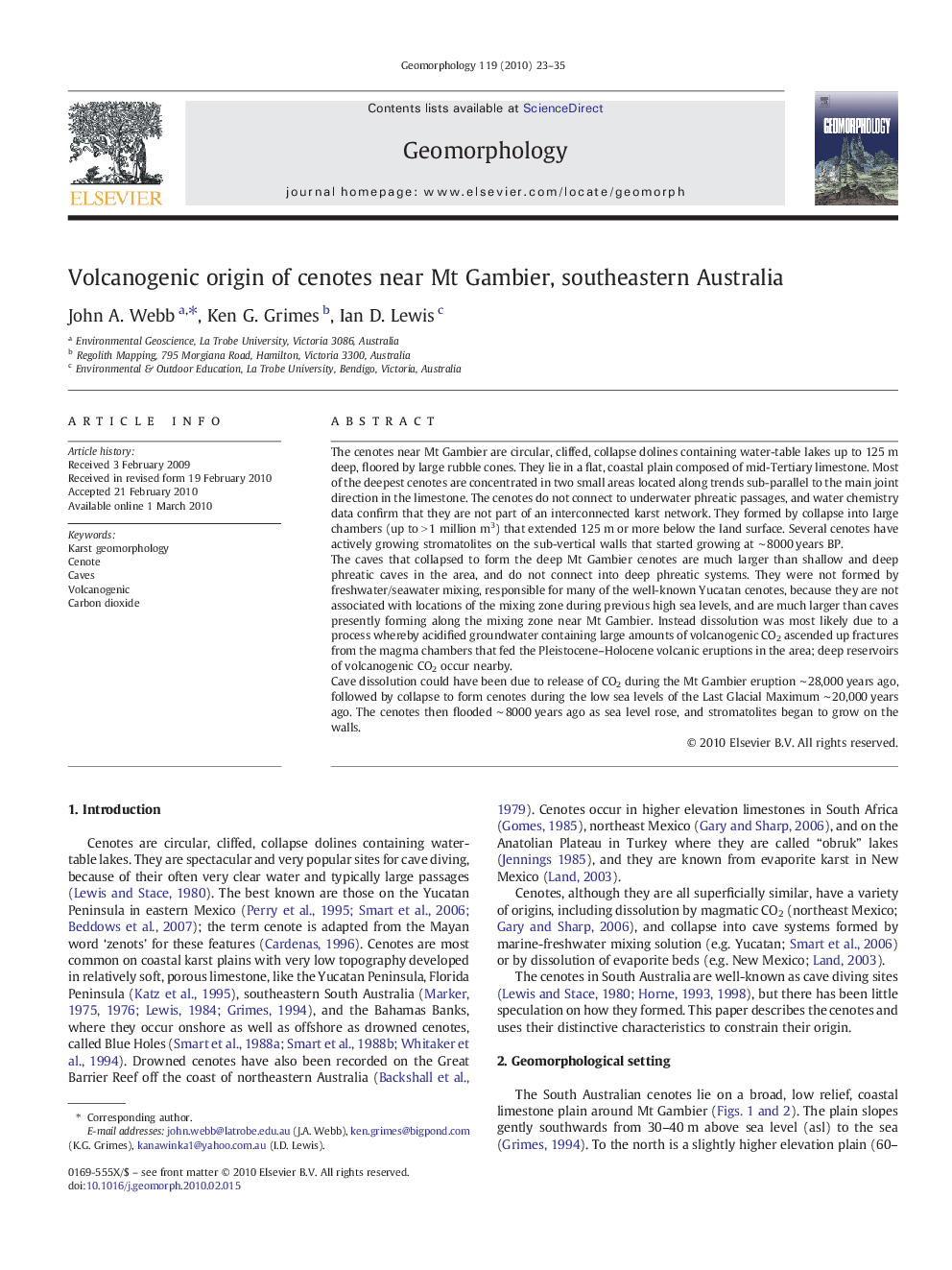| Article ID | Journal | Published Year | Pages | File Type |
|---|---|---|---|---|
| 4685921 | Geomorphology | 2010 | 13 Pages |
The cenotes near Mt Gambier are circular, cliffed, collapse dolines containing water-table lakes up to 125 m deep, floored by large rubble cones. They lie in a flat, coastal plain composed of mid-Tertiary limestone. Most of the deepest cenotes are concentrated in two small areas located along trends sub-parallel to the main joint direction in the limestone. The cenotes do not connect to underwater phreatic passages, and water chemistry data confirm that they are not part of an interconnected karst network. They formed by collapse into large chambers (up to > 1 million m3) that extended 125 m or more below the land surface. Several cenotes have actively growing stromatolites on the sub-vertical walls that started growing at ∼ 8000 years BP.The caves that collapsed to form the deep Mt Gambier cenotes are much larger than shallow and deep phreatic caves in the area, and do not connect into deep phreatic systems. They were not formed by freshwater/seawater mixing, responsible for many of the well-known Yucatan cenotes, because they are not associated with locations of the mixing zone during previous high sea levels, and are much larger than caves presently forming along the mixing zone near Mt Gambier. Instead dissolution was most likely due to a process whereby acidified groundwater containing large amounts of volcanogenic CO2 ascended up fractures from the magma chambers that fed the Pleistocene–Holocene volcanic eruptions in the area; deep reservoirs of volcanogenic CO2 occur nearby.Cave dissolution could have been due to release of CO2 during the Mt Gambier eruption ∼ 28,000 years ago, followed by collapse to form cenotes during the low sea levels of the Last Glacial Maximum ∼ 20,000 years ago. The cenotes then flooded ∼ 8000 years ago as sea level rose, and stromatolites began to grow on the walls.
